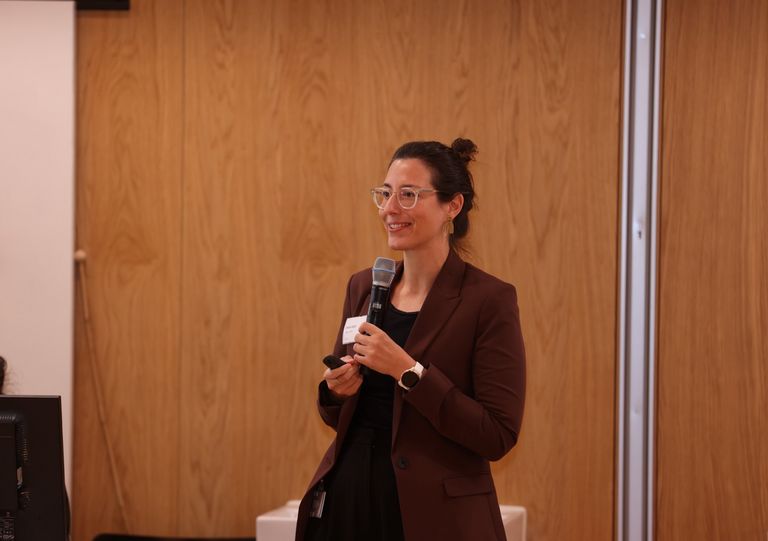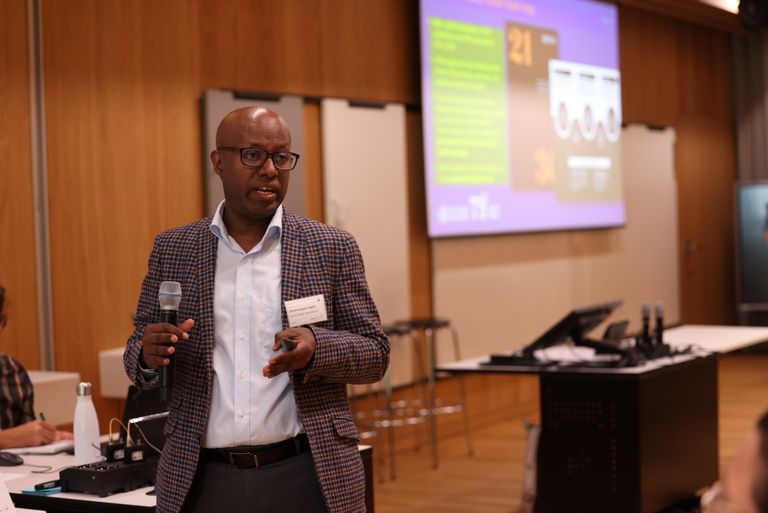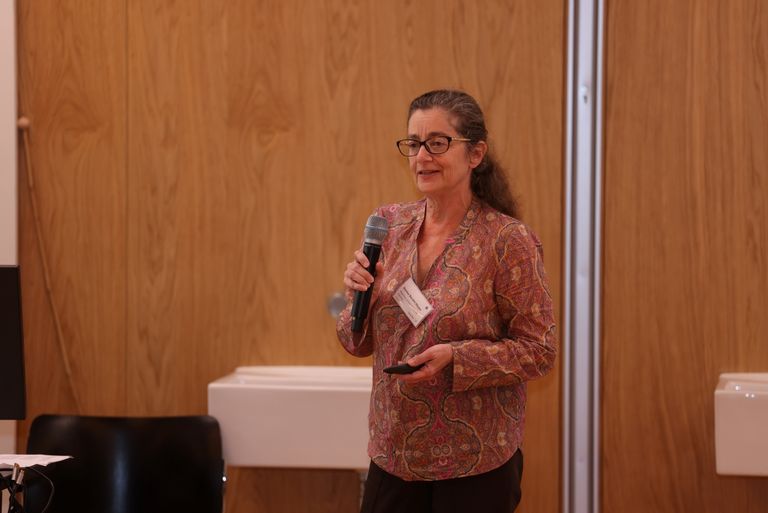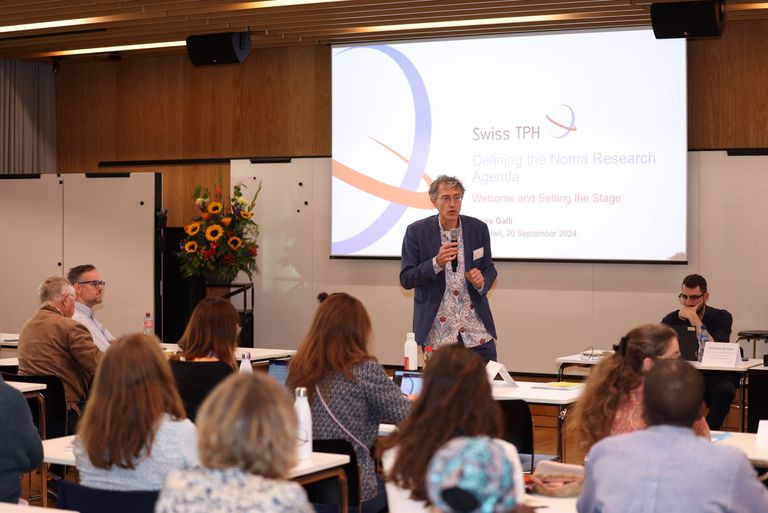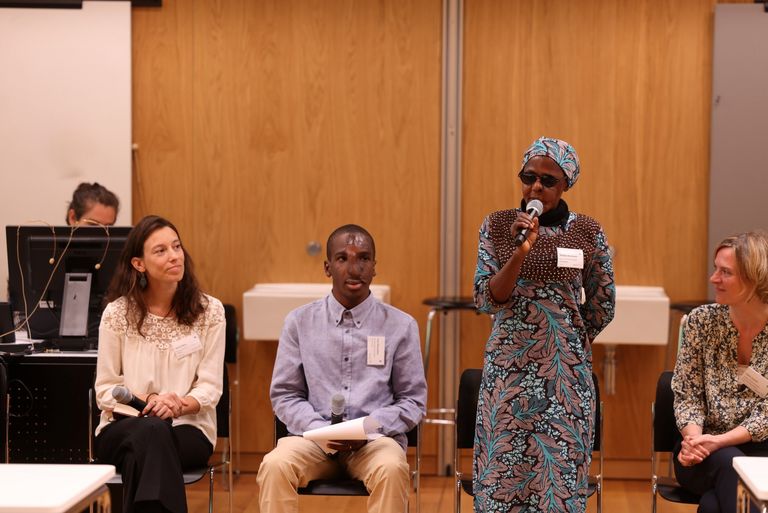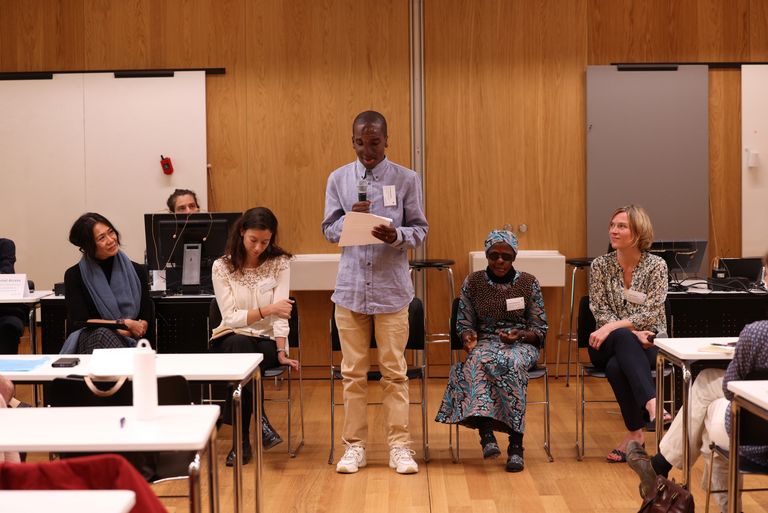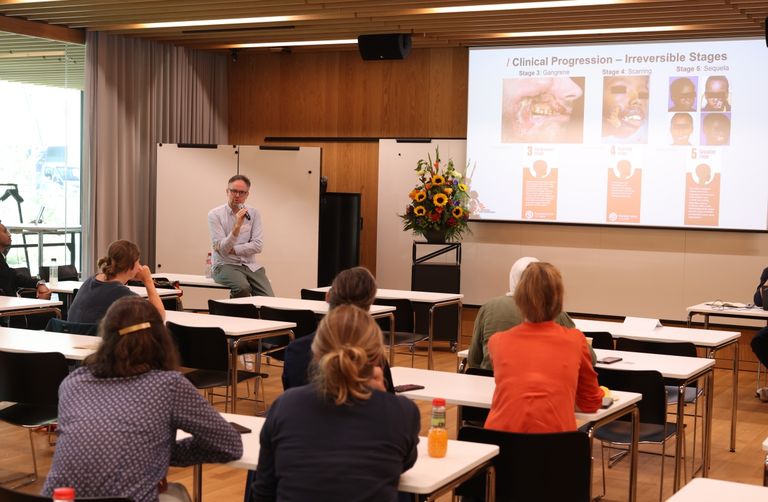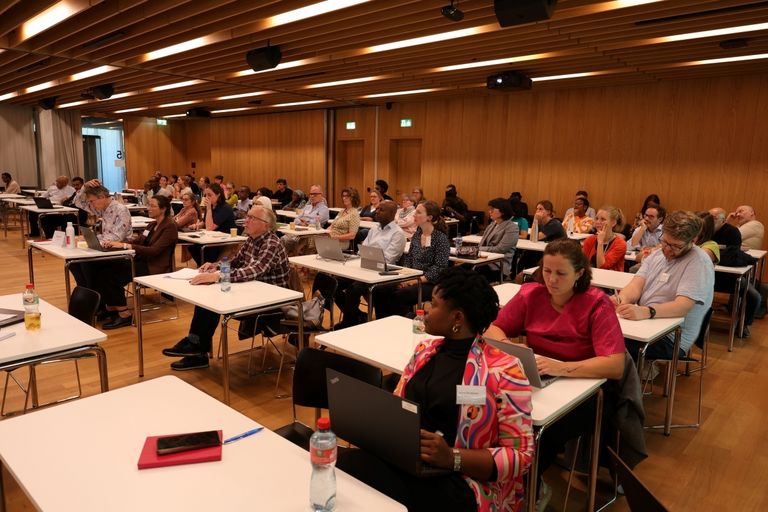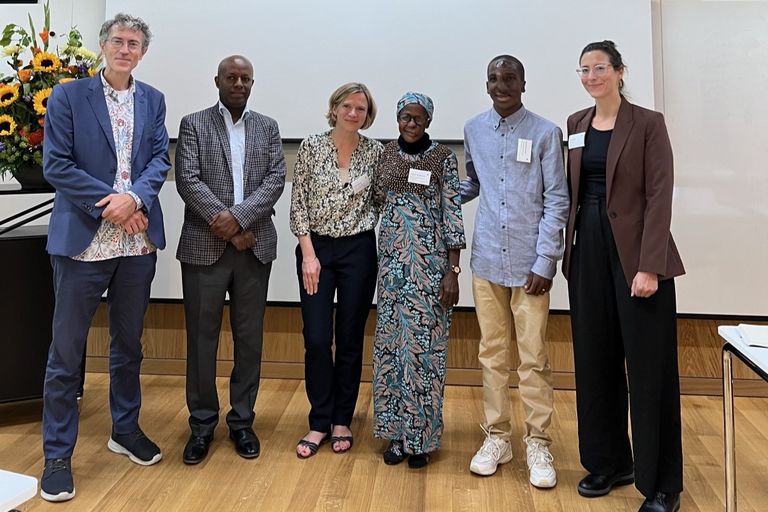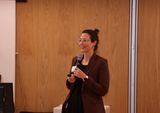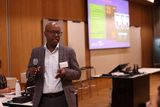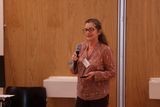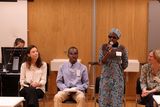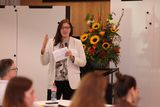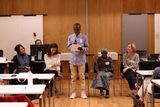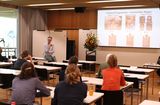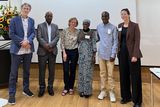Swiss TPH Symposium: Defining the Noma Research Agenda
20.09.2024
Today, on 20 September 2024, the Swiss Tropical and Public Health Institute (Swiss TPH) organised a symposium entitled “Defining the noma research agenda” in Allschwil near Basel. The symposium brought together around 100 scientists, public health experts, politicians, health advocates as well as noma survivors. The aim of the symposium was to join forces against noma – a severe and rapidly progressing condition primarily affecting children living in extreme poverty – and define a common research agenda.

The symposium brought together scientists, experts as well as noma survivors to jointly develop a research agenda for noma. From left to right: Maria Guevara (Médecins Sans Frontière), Marta Ribes (Barcelona Institute for Global Health), Vava Muendane, Mulikat Okanlawon, Claire Jeantet (all 3: Elysium). Photo: J. Pelikan/Swiss TPH
Growing recognition for an invisible disease
Noma is a devastating disease that mainly affects children living in extreme poverty. The disease starts seemingly harmless as sore gums and mild bad breath. At this stage, the disease would be easy to cure with a broad-spectrum antibiotic. If left untreated, the infection spreads to surrounding tissues and leads to necrosis within a few days. First soft tissues die, then cartilage structures and bones are attacked and literally eaten away by the infection.
Up to 90% of people die from noma, if they are left untreated. Still many aspects around noma are unknown, from the exact course of the disease to the number of people who are affected by it. At the end of 2023, the World Health Organization officially recognised noma as a neglected tropical disease (NTDs). It is hoped that this decision will help noma gain the urgently needed global attention.
Defining a research agenda for noma
Using this momentum of increased global recognition, Swiss TPH brought together around 100 scientists, public health experts, and health advocates from around to globe as well as noma survivors from Nigeria and Mozambique. The symposium, organised jointly with the noma survivors’ association Elysium , was held in Allschwil, near Basel. The aim was to define a common research agenda in order to strengthen the evidence and put forward a clear strategy on how to combat noma.
“The decision by WHO to add noma to the official list of NTDs is an important milestone in the fight against the disease. It is now essential that the research community and key stakeholders in global health work hand-in-hand to identify and fill existing knowledge gaps and to develop an effective plan of action,” said Jürg Utzinger, Director of Swiss TPH, in his opening remarks.
Importance of partnerships
Erika Placella, Head of the Global Program Health at the Swiss Agency for Development and Cooperation (SDC), spoke about Switzerland’s crucial role in tackling NTDs in particular given the broad variety of actors based in the country ranging from academia, international organizations, product development partnerships, NGOs and the private sector.
Denise Baratti-Mayer, Associate Physician at the University Hospital of Geneva, presented an overview of research about noma conducted in the past 20 years. She reminded the audience that while it is important to fill specific gaps such as investigating the exact cause of noma, we must put the children at the heart of any efforts, ensuring early detection and treatment.
Daniel Argaw Dagne, Unit Head, Prevention, Treatment and Care, Department of Control of NTDs at WHO, presented on the WHO NTD road map 2021-2030 and the objectives related to noma. Specifically, he spoke about the opportunity of integrating skin NTDs such as noma, leprosy, scabies or buluri ulcer into one framework to address these diseases more effectively through coordinated efforts in early-detection, diagnosis, capacity strengthening and advocacy.
“We can do more, starting today”
The following panel discussion focused on the perspective of noma survivors. Both Mulikat Okanlawon, President and Co-Founder, Elysium Noma Survivors Association, and Vava Muendane, member of Elysium, shared their impressive journeys from falling ill with noma as children, being stigmatized in their communities and undergoing plastic surgery to where they are today: global advocates for noma.
The discussion underscored the lasting impacts of the disease, both physically and psychologically, and stressed the importance of involving noma survivors in research. Okanlawon also called the audience to action: “We have achieved already a lot with getting noma on the NTD list, but we can do more, starting today. You, researchers, need to play a big role in order to put an end to this disease.”
A blueprint on how to do NTD research
In the afternoon, the participants worked in five parallel sessions on various aspects of the research agenda, including noma surveillance and prevention, physical and mental well-being of people affected by noma as well as disease stages, re-constructive surgery and therapeutic aspects of noma.
Participants stressed the importance of generating consistent, reliable data for further research; the importance of integrating noma into existing surveillance and education programmes (e.g. nutrition, maternal and child health); and the importance of considering the social and economic impact of noma survivors.
“It is not just about defining a research agenda that will take this disproportionately neglected disease out of the shadows,” said Marianne Comparet, Director of the International Society for Neglected Tropical Diseases. “We also want to create a blueprint or new paradigm of how research on a vast number of neglected diseases is conceptualised and executed.”
Participants agreed that ending noma is eminently feasible, if stakeholders across sectors and disciplines work together. “No one should have to suffer or die from a disease that is preventable and treatable,” said Anaïs Galli, scientific collaborator at Swiss TPH and co-organiser of the symposium. “The solution is in our hands: we must collaborate across borders and sectors to achieve food security, access to healthcare, improved hygiene, and ultimately a global reduction of poverty.”
Long-standing expertise in NTDs
Swiss TPH has a long tradition of working in the area of NTDs, from basic research, drug discovery and development and training all the way to health interventions, systems strenghtening and policy advise. In 2022, Swiss TPH co-authored a landmark systematic review in The Lancet Infectious Diseases, providing an important scientific basis for the inclusion of noma on the WHO list of NTDs.
Contact

Anaïs Galli
PhD Student
+41612849252
anais.galli@swisstph.ch
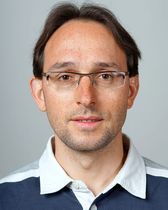
Peter Steinmann
PhD, PD
Head of Unit
+41612848229
peter.steinmann@swisstph.ch
Stay connected
Subscribe to our newsletter and get all the latest research news, project updates, course and event listings from Swiss TPH.
